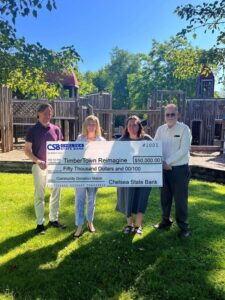

Article and photos by Master Naturalist, Doug Jackson
A reader and several visitors to the Eddy Discovery Center have been asking about the American beech trees along the Bog Trail at the center. They have noticed that several of the trees have lower branches that appear dead and are covered with a black charred- looking substance.
This black substance is a type of sooty mold fungus called Scorias spongiosa. This fungus is not to be confused with another similar looking fungus found on black cherry trees, Apiosporina morbosum, or black knot – also affectionately known as “poop-on-a-stick”.
While black knot is considered a disease and can kill the portion of the tree it infests, Scorias spongiosa does not harm the tree. Though, the branch of the tree it grows on may have already died from another kind of infestation.
Scorias spongiosa grows on a host of honeydew left by the beech blight aphids, Grylloprociphilus imbricator.

If you hiked on the Bog trail late last summer into the fall, you may have noticed that those same beech tree branches, now covered with the black sooty mold, looked all white, as if covered by a thick frost.
Upon closer examination, the observer would have seen those branches covered with a swarm of tiny white beech blight aphids, sometimes called boogie-woogie aphids because of their unique dance they do when disturbed.
These aphids pierce through the outer bark layer and sip out the sap from the cambium layer of the branches. The aphids excrete their waste product in the form of a sweet and sticky honeydew that is enjoyed by some ants.
If the number of aphids infesting the branch is large enough, the branch can die off, but the tree itself will not be harmed and will continue to grow.
As the honeydew accumulates, spores from nearby sooty mold will gather on it and begin to grow.
Early on, the mold will not have any pigment and will appear as a golden jelly-like fungus.

The aphids will continue to feed and excrete on these branches and the mold will continue to expand on new layers of honeydew. Eventually, as the mold matures, it will gain pigment and turn into that sooty black spongey mold.
Sometimes an observer can find the mold along the branches in a thin layer exactly where the white aphids were crawling last fall. Other places, the mold can be found in large clumps and even covering some dead leaves.
It can be fascinating to find how nature has selected hosts for certain organisms that wind up providing a habitat for other organisms to thrive. When we look closely, the forest is full of fascinating ecosystems and organisms that can be easily missed by the casual visitor.
















